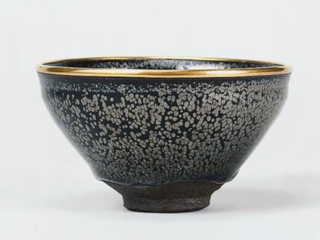Tenmoku Or Temmoku?

If you want to know how the Japanese say it, it is easiest to understand if you look in a dictionary. I use this one:
http://www.csse.monash.edu.au/~jwb/wwwjdic.html
天目 【て ん も く】
Te n mo ku
It is the Japanese pronunciation of the Chinese: Tien mu Shan = "Mountain of the Eye of Heaven" , a mountain in Chechiang provice, China. This is where a monastary was where Eihei Dogen studied and from where he brought the first tenmoku bowl from China to Japan in 1228. Kato Shirozaemon Kagemasa was a monk who traveled with Dogen and he came back and established the new technology kilns in Seto that he learned about in Sung China. So, as you can see, it is difficult to separate Zen from the pottery we love. ;^)
A black glaze used on straight-sided conical tea bowls known as tenmoku ware, tenmoku 天目. The glaze contains iron salts which turn back when they are oxidized in a kill. If the iron content is low, a yellow-brown or liver-brown glaze called *ameyuu 飴釉 is produced. If iron content is high, it creates a red-brown glaze called *kakiyuu 柿釉. It originated in China in the 11-8c BC, and typifies Song period (960-1179) Jian ware, kenyou 建窯, from Fujian-shen province. Example were brought to Japan in the Kamakura period (13-14c) by monks studing in China, at the end of the Song period, and imitated, for example in Seto. By the momoyama period, (late 16c), high-quality Japanese black glazes like kokkatsuyuu 黒褐釉 (made in Seto), setoguro 瀬戸黒 and oribekuro 織部黒 (made in Mino, Gifu prefecture) had developed. Tenmoku ware was used by the Japanese aristocracy for tea ceremony, and gradually, all black or black-brown glaze became known as tenmokuyuu.







